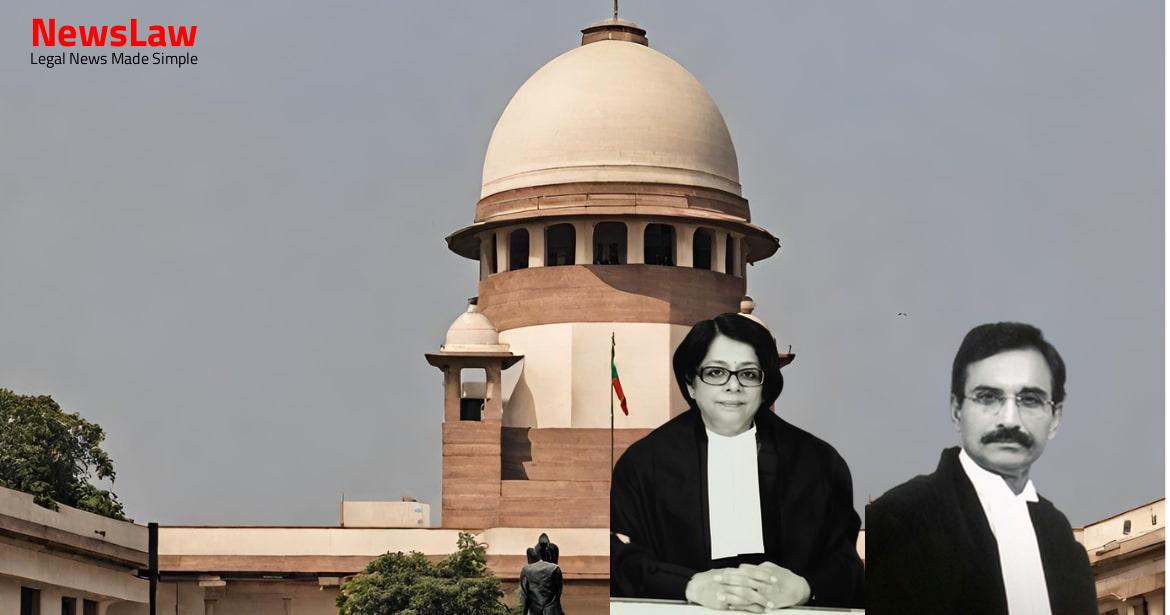A recent legal case saw the High Court examining the imposition of damages for environmental harm in a Wildlife Sanctuary. The court’s analysis focused on the significance of upholding principles of natural justice and following proper procedures in such matters. The case sheds light on the importance of legal frameworks like the Wildlife (Protection) Act, 1972 in safeguarding wildlife and preserving sanctuaries. Let’s delve into the implications of this case for environmental justice and wildlife protection.
Facts
- The High Court observed that imposing damages of Rupees Ten Crores was in breach of principles of natural justice.
- No opportunity of being heard was given to the original writ petitioners before imposing such damages.
- There was no material to impose damages of Rupees Ten Crores.
- The High Court set aside the order imposing damages of Rupees Ten Crores for discharging the effluent into the national sanctuary.
- Respondents running an educational institution near the National Chambal Sanctuary Project.
- Effluent from the institution causing environmental damage and endangering flora and fauna.
- Forest Department imposed damages of Rs.10,00,00,000 on the respondents for environmental harm.
- Respondents continued to discharge effluent despite orders to stop.
- Notices issued for compliance with pollution control laws.
- Original writ petitioners claimed violation of natural justice in the imposition of damages.
- Forest Department had been issuing notices to respondents since 2003 about environmental threats.
Also Read: Challenging Legal Presumptions in Negotiable Instrument Cases
Arguments
- Shri V.K. Shukla, learned Senior Advocate appeared on behalf of the State.
Also Read: Legal Analysis of Admission Irregularities in Educational Institutions
Analysis
- The order imposing damages of Rs. 10,00,00,000/- was found to be in gross violation of natural justice as no opportunity of hearing was given to the respondent.
- Imposing damages without statistical basis or assessment for loss is considered excessive and without material support.
- Section 33 of the Wild Life (Protection) Act, 1972 grants wide powers to authorities to ensure wildlife preservation and sanctuary security, but proper procedures must be followed.
- No show cause notice was issued before imposing damages, questioning the authority’s power to do so.
- The Chief Wildlife Warden has the authority to take measures for wildlife improvement and may even order closure of institutions affecting the sanctuary environment.
- Mere issuance of notice is not sufficient; appropriate proceedings must be initiated to determine damages.
- Section 33 of the Wild Life (Protection) Act, 1972 grants the Chief Wild Life Warden the authority to control, manage, and maintain all sanctuaries.
- The Chief Wild Life Warden can undertake construction work within the sanctuary limits, such as roads, bridges, buildings, fences, or barrier gates.
- No construction of commercial tourist lodges, hotels, zoos, and safari parks is allowed inside a sanctuary without the prior approval of the National Board.
- The Chief Wild Life Warden is responsible for ensuring the security of wild animals and the preservation of the sanctuary.
- Measures can be taken for the improvement of habitat and to regulate or prohibit grazing or movement of livestock in the interests of wild life.
- Setting aside the order of damages does not require any interference from the Court.
- If authorities believe the petitioners are still discharging effluent in the national sanctuary, they can take action under Section 33.
- Continued discharge of effluent damaging environment and wildlife in the sanctuary is a serious matter.
Also Read: Legal Analysis: Driver Appointment Dispute
Decision
- Special leave petitions have been disposed of.
- Authorities must take steps to stop discharge of effluent if it is a threat to the environment or wildlife in the national sanctuary.
- Actions to be taken in accordance with the Wild Life (Protection) Act, 1972 and principles of natural justice.
- Closure of institutions and stopping effluent discharge may be necessary.
- Authorities should not be content with issuing notices only, but must take further actions.
Case Title: STATE OF U.P. Vs. ANAND ENGINEERING COLLEGE (2022 INSC 711)
Case Number: SLP(C) No.-010084-010085 / 2022



